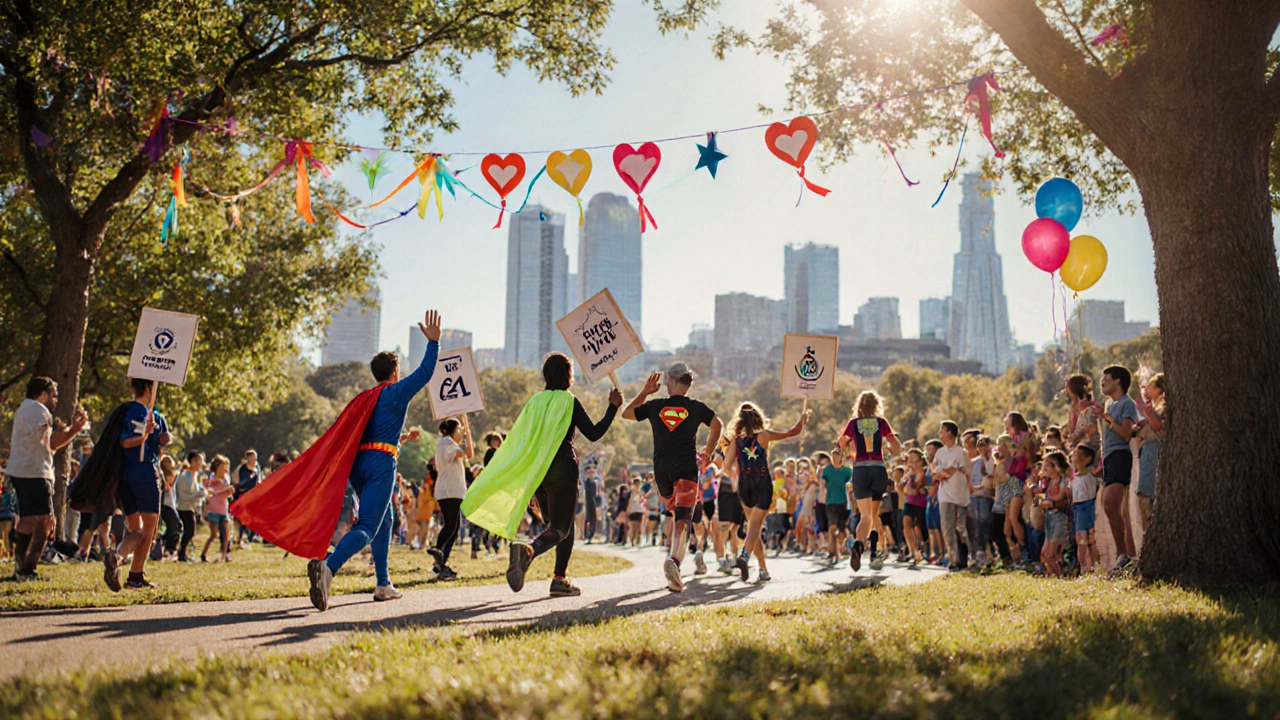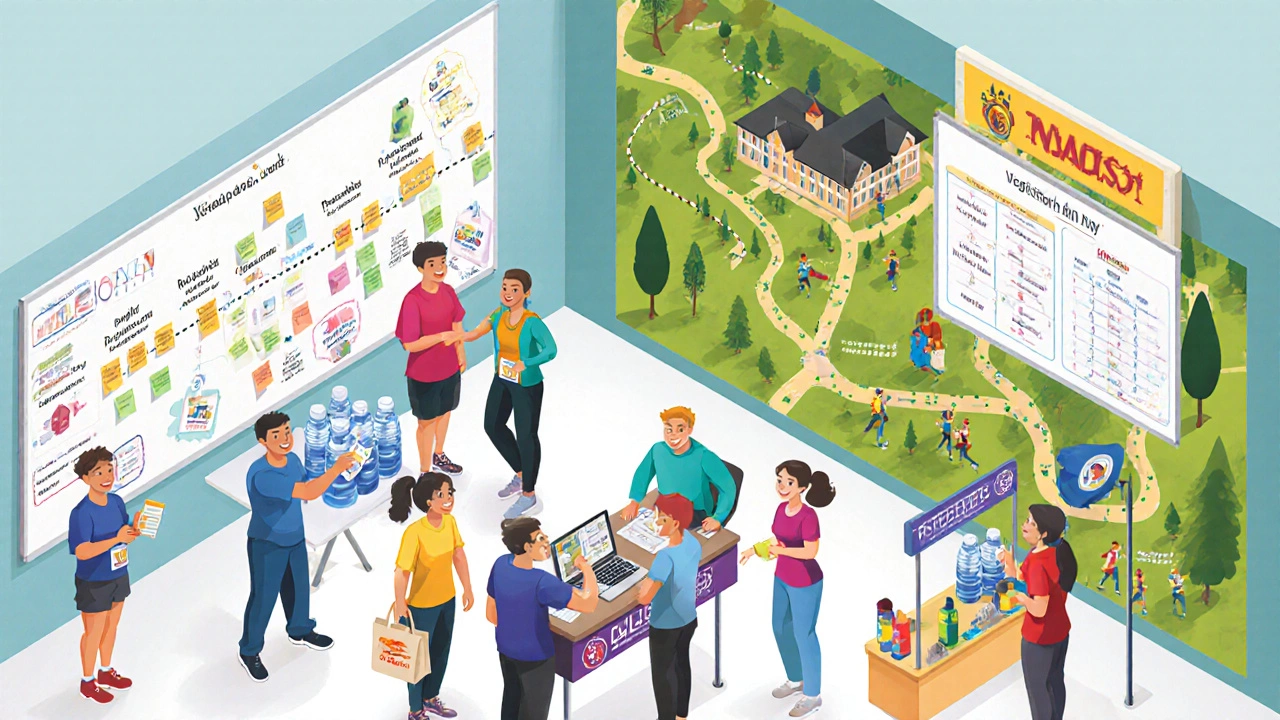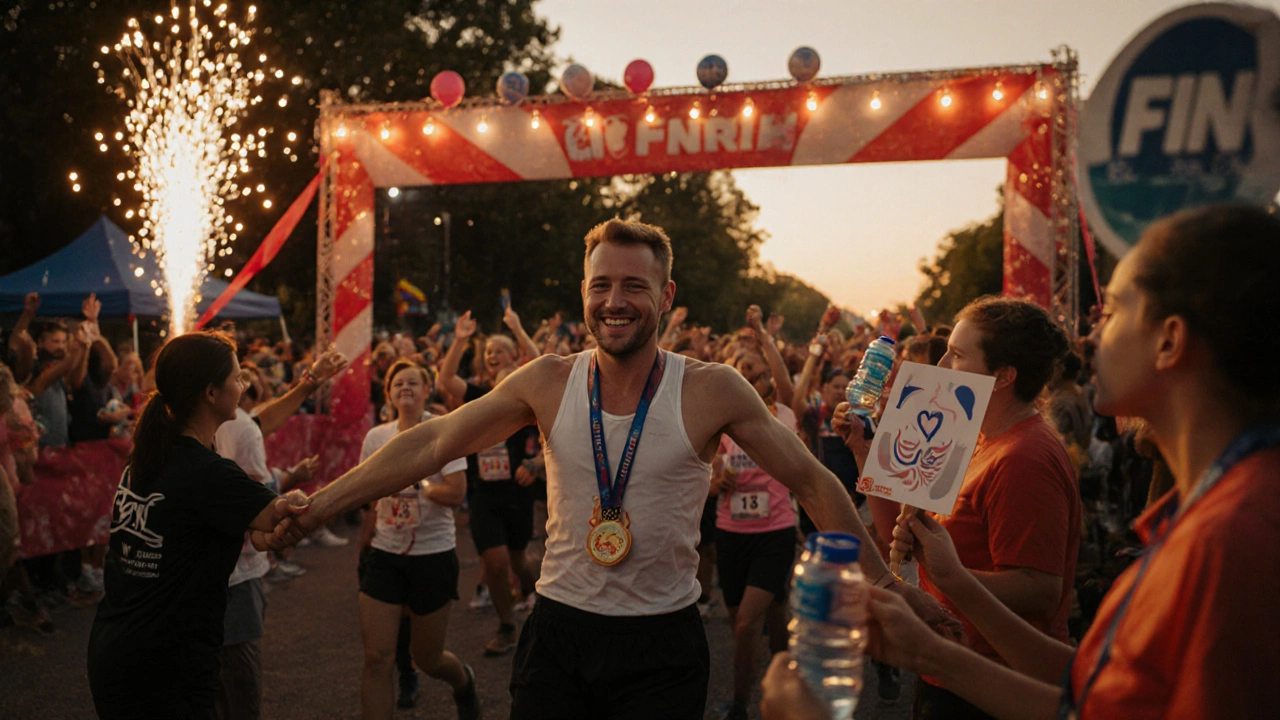Learn what a fun run fundraiser is, why it works, key planning steps, budget tips, fun ideas, and FAQs to run a successful charity race.

- Created by: Lydia Carmichael
- Completed on: 14 Oct 2025
- Categories: Charities
Fun Run Fundraiser Calculator
Estimate Your Fundraising Potential
Calculate your potential revenue and net donations for a fun run event
Your Fundraising Breakdown
Total Revenue
- Entry Fees:
- Peer-to-Peer:
- Sponsorships:
Costs & Net Donation
- Estimated Costs:
- Net Donation to Charity:
Quick Takeaways
- A fun run fundraiser blends a casual race with a charitable cause.
- Key players are charities, participants, sponsors, volunteers, and the community.
- Planning follows a clear timeline: concept ➜ route ➜ promotion ➜ race day ➜ post‑event reporting.
- Use themes, games, and reward tiers to keep runners motivated to fundraise.
- Measure success with total donations, participant count, and social impact metrics.
When you hear the term fun run fundraiser, you might picture people in quirky costumes jogging a short distance while holding up signs for a cause. That image is spot‑on, but there’s a lot more behind the scenes that turns a simple run into a powerful money‑raising engine.
Fun Run Fundraiser is a community‑focused, often non‑competitive race designed to raise money for a specific charity or nonprofit mission. Typically the distance ranges from 1km to 5km, making it accessible for all ages and fitness levels. The event combines the excitement of a race with the goodwill of philanthropy, creating a win‑win for participants and the cause they support.
Charity is a registered nonprofit organization that relies on donations, grants, and fundraising events to advance its mission. Partnering with a charity gives the run purpose and provides a clear narrative for donors and volunteers.
Why Choose a Fun Run for Fundraising?
Running events attract a built‑in audience looking for a reason to get active. Compared with a sit‑down gala, a fun run costs less to host, draws larger crowds, and offers ample opportunities for participants to solicit donations from friends and family. The low barrier to entry means you can tap into schools, workplaces, and neighborhood groups, expanding your donor base beyond traditional circles.
Core Elements of a Successful Fun Run
Every thriving fun run shares a handful of essential components. Below is a checklist of the primary entities you’ll need to consider:
- Charity Partner - the organization that receives the funds and provides the cause story.
- Participants - runners, walkers, and supporters who register and raise money.
- Sponsors - local businesses or corporations that contribute cash or in‑kind support for publicity.
- Donation Model - how funds are collected (entry fees, peer‑to‑peer pages, on‑site collections).
- Volunteers - people who help with registration, water stations, route marking, and clean‑up.
- Community Support - local government permits, schools, and neighborhood groups that provide venue access.
- Race Route - a safe, scenic course that matches the event’s theme and distance.
- Fundraising Goal - a clear monetary target that motivates participants and sponsors.

Step‑by‑Step Planning Timeline
- Define the mission (Weeks1‑2): Choose a charity, set a realistic fundraising goal, and decide on a date that avoids major local clashes.
- Secure permits and venue (Weeks3‑4): Work with the city council or park authority to lock in the Race Route and obtain any needed insurance.
- Recruit sponsors (Weeks5‑6): Offer tiered packages (e.g., title sponsor, water station sponsor, t‑shirt branding) and provide exposure metrics.
- Build the registration platform (Weeks7‑8): Use an online portal that automatically creates peer‑to‑peer fundraising pages for each Participant.
- Mobilize volunteers (Weeks9‑10): Create roles, schedule shifts, and run a short training session on safety and crowd management.
- Promote the event (Weeks11‑14): Leverage social media, local press, schools, and workplaces. Highlight themes, prizes, and the charity story.
- Finalize logistics (Week15): Print bibs, set up water stations, arrange timing mats, and confirm all vendor deliveries.
- Race day (Day0): Follow a concise schedule - welcome, warm‑up, start waves, finish celebration, and thank‑you speech.
- Post‑event wrap‑up (Weeks1‑2 after): tally Donations, send thank‑you notes, and publish impact results.
Budgeting and Funding Sources
Even though a fun run is “fun”, you still need a solid budget. Typical cost categories include permits, timing equipment, t‑shirts, marketing, and refreshments. Offset these costs by securing sponsorships and encouraging participants to meet a personal fundraising minimum. A popular model is:
- Entry fee: $15 per runner (covers basic costs).
- Peer‑to‑peer raising: each runner aims for $100 in donations.
- Sponsor contributions: local cafes supply snacks; a sports store provides branded shirts.
When sponsor value exceeds cash, treat the in‑kind contribution as an equivalent monetary amount for accounting purposes.
Making It Fun: Ideas to Boost Participation
People sign up for a run because they want a good time. Here are proven tactics to keep the energy high:
- Themed costumes: “Superhero Sprint”, “80s Retro Run”, or “Glow‑in‑the‑dark Night Run”. Offer a prize for the best outfit.
- Interactive stations: water points with cheering volunteers, short dance challenges, or pop‑up photo booths.
- Mini‑competitions: fastest family, most funds raised, or biggest group of cyclists joining the run.
- Live music or DJ: set up a stage at the start/finish line to create a festival vibe.
- Reward tiers: digital badges, certificates, and community shout‑outs for reaching fundraising milestones.

Fun Run vs. Charity Walk vs. Marathon: Quick Comparison
| Aspect | Fun Run | Charity Walk | Marathon |
|---|---|---|---|
| Typical Distance | 1‑5km | 2‑4km (walking pace) | 42.195km |
| Target Audience | All ages, families | Families, seniors, casual supporters | Serious runners, elite athletes |
| Logistics Cost | Low‑to‑moderate | Low | High (timing chips, medical staff) |
| Fundraising Potential | Medium‑high (peer‑to‑peer) | Medium (entry fees) | Very high (sponsorship, entry fees) |
| Community Impact | High visibility, local pride | Promotes health, inclusivity | Raises city profile, attracts tourism |
Common Pitfalls and How to Avoid Them
- Unclear cause narrative: Always tie the race story to a specific project (e.g., “Run to fund 10 new school meals”).
- Insufficient permits: Start the approval process at least three months ahead; keep a checklist of safety requirements.
- Over‑ambitious route: Test the course with a small group before the event day to spot hazards.
- Poor communication with volunteers: Send a simple schedule, assign a team leader, and provide a contact list for emergencies.
- Neglecting post‑event gratitude: Send personalized thank‑you emails within 48hours, and share impact stats to encourage future participation.
Measuring Success and Reporting Impact
After the race, the real work begins: turning dollars raised into tangible results and showing donors the difference they made. Create a one‑page impact report that includes:
- Total funds collected (gross vs. net after costs).
- Number of participants and volunteer hours logged.
- Specific outcomes for the charity (e.g., “$12,000 will provide 1,200 school lunches”).
- Social media reach and media mentions.
- Feedback quotes from participants and the charity.
Sharing this report on your website, via email newsletters, and on social channels builds trust and lays the groundwork for the next fun run.
Frequently Asked Questions
How much does it cost to organize a fun run?
Costs vary, but a typical community fun run can be run for $2,000‑$5,000 depending on venue fees, timing equipment, t‑shirts, and refreshments. Securing local sponsors often covers the bulk of these expenses, leaving most donations for the charity.
Do participants need to be runners?
No. The “fun” part means anyone can join-walk, jog, or even crawl in costume. The key is encouraging them to raise funds and enjoy the community atmosphere.
What legal steps must I take?
Register the event with your local council, obtain a public liability insurance policy, and, if you’re collecting donations, ensure the charity’s tax‑exempt status is verified. Many regions also require a food‑handling permit if you serve snacks.
How can I motivate participants to raise more money?
Set clear fundraising targets, offer tiered rewards (e.g., custom medals, shout‑outs), and provide easy-to‑share online fundraising pages. Highlight top fundraisers on social media during the lead‑up to the event.
Can I run a fun run virtually?
Absolutely. Provide participants with a tracking app or QR code, let them log miles from any location, and schedule a live‑stream finish ceremony. Virtual runs widen reach and reduce venue costs.